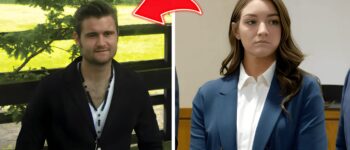
In the early 1990s, the Menendez brothers—Lyle and Erik—became household names after the brutal murders of their parents. The case captivated the American public due to its shocking nature, media coverage, and the complex legal and moral questions it raised. Today, it remains one of the most infamous cases in American criminal history, highlighting issues of family dynamics, abuse, wealth, and justice.

Early Life and Family Background
José Enrique Menéndez was born on May 6, 1944, in Havana, Cuba. At the age of 16, following the Cuban Revolution, he moved to the United States. José attended Southern Illinois University, where he met Mary Louise “Kitty” Andersen. The couple married in 1963 and relocated to New York City, where José earned an accounting degree from Queens College.
Their first son, Joseph Lyle, known as Lyle, was born on January 10, 1968, in New York. Kitty left her teaching job to care for Lyle, and the family moved to New Jersey, where their second son, Erik Galen, was born on November 27, 1970, in Gloucester Township. The family settled in Hopewell Township, and both brothers attended Princeton Day School.
Allegations of Abuse
In the summer of 1976, Lyle and Erik’s cousin, Diane Vander Molen, stayed with the family. During her visit, Lyle confided in her that he was being sexually abused by his father. Vander Molen informed Kitty, but Kitty sided with her husband, accusing Lyle of lying. This incident marked the beginning of a series of allegations that would later surface during the brothers’ trial.

Move to Beverly Hills and Erik’s Tennis Career
In 1986, José’s career as a corporate executive took the family to Beverly Hills, California. Erik attended Beverly Hills High School, where he earned average grades but excelled in tennis, ranking 44th in the US as a junior. Just weeks before the murders, Erik participated in the 1989 Boys’ Junior National Tennis Championship, showcasing his talent on a national stage.
The Night of the Murders
On the evening of August 20, 1989, José and Kitty Menéndez were in the den of their Beverly Hills mansion when their sons, Lyle and Erik, entered carrying shotguns. José was shot six times, including a fatal shot to the back of the head with a Mossberg 12-gauge shotgun. Kitty was shot ten times, with the fatal shot to her cheek delivered after she had been crawling on the ground, crying. Lyle even ran to his car to reload before firing the final shot.

The Immediate Aftermath
After the killings, the brothers stayed in the house, expecting the police to arrive due to the noise of the gunshots. When the police did arrive, Lyle and Erik claimed they had been at a movie theater watching “Batman” and attending the “Taste of L.A.” festival. The police did not perform gunshot residue tests on the brothers, which could have indicated recent firearm use.
Extravagant Spending
In the months following the murders, Lyle and Erik began spending lavishly. Lyle purchased Chuck’s Spring Street Cafe in Princeton, New Jersey, along with a Rolex watch and a Porsche Carrera. Erik hired a full-time tennis coach and competed in tournaments in Israel. They left their Beverly Hills mansion and moved into adjoining condominiums in Marina del Rey. Their extravagant lifestyle included dining at expensive restaurants and taking trips to the Caribbean and London. They spent approximately $700,000 before their arrests, although family members later claimed their spending habits had not changed after the murders.
Investigation and Arrests
Initially, the police focused on suspects with motives to kill José and Kitty, including potential mob connections. However, as the investigation progressed, the brothers’ financial motives and their spending after the murders made them prime suspects. To obtain a confession, the police had Erik’s friend, Craig Cignarelli, wear a wire during a lunch with Erik, but Erik denied any involvement.
Eventually, Erik confessed to his psychologist, Jerome Oziel, who then told his mistress, Judalon Smyth. After Oziel and Smyth broke up, Smyth informed the police about the brothers’ involvement. Lyle was arrested on March 8, 1990, and Erik turned himself in three days later after returning from Israel. Both were held without bail and jailed separately.

Legal Battles and Trials
In August 1990, Judge James Albrecht ruled that tapes of conversations between Erik Menéndez and his psychologist, Jerome Oziel, were admissible as evidence. Oziel claimed that Lyle had threatened him, thus violating doctor-patient privilege. This ruling was appealed, causing a two-year delay. In August 1992, the Supreme Court of California decided that most of the tapes were admissible, except for the one where Erik discussed the murders. Following this decision, a Los Angeles County grand jury indicted the brothers for the murders of their parents in December 1992.
The Menéndez case gained national attention when the trial was broadcast in 1993. Defense lawyer Leslie Abramson represented the brothers, who claimed they killed their parents out of fear for their lives after enduring years of abuse, particularly sexual abuse by their father. José Menéndez was portrayed as a cruel perfectionist and pedophile, while Kitty Menéndez was described as an enabling, mentally unstable alcoholic who was also violent towards the brothers.
The Menendez case was one of the first major trials to be televised, and it set the stage for the era of “court TV.” The public was able to watch every detail unfold in real-time, and the brothers became notorious figures, much like O.J. Simpson would a few years later. The case attracted intense media scrutiny, with tabloids and talk shows fueling public interest in the gruesome details of the crime.
This level of exposure had both positive and negative effects. On one hand, it brought attention to issues like domestic abuse and family trauma. On the other hand, it turned the case into a form of entertainment, with the brothers’ lives being dissected and sensationalised for profit.
Testimonies and Evidence
The defense’s allegations were supported by testimonies from family members. Cousin Andy Cano testified that Erik had confided in him about the sexual abuse, describing it as “penis massages.” Another cousin, Diane Vander Molen, testified that she had informed Kitty about José’s molestation of Lyle, but Kitty dismissed it as false. The defense also presented a photograph of the brothers’ genitalia, allegedly taken by their father when they were children.
The prosecution argued that the murders were financially motivated, a claim disputed by the defense, which asserted that the brothers did not expect to inherit their father’s wealth. Prosecutor Pam Bozanich controversially argued that men could not be raped due to lacking the necessary “equipment.”
Erik testified that he had told Lyle about the abuse weeks before the murders, leading to confrontations within the family. The brothers claimed their father threatened to kill them if they revealed the abuse. On the night of the murders, they alleged that their father closed the den’s door, prompting them to load their shotguns out of fear for their lives.
Convictions and Sentencing
The first trial ended with two deadlocked juries, prompting a retrial. The second trial, less publicized due to the absence of cameras, saw Judge Stanley Weisberg limit testimony about the sexual abuse claims and prevent the jury from considering manslaughter charges. Both brothers were convicted of first-degree murder and conspiracy to commit murder. They were sentenced to life in prison without the possibility of parole. The jury rejected the defense’s theory that the brothers acted out of fear, believing instead that they killed their parents for financial gain.
During the penalty phase, Abramson allegedly instructed a defense witness to edit his notes, but no criminal investigation was launched. The brothers filed motions for a mistrial, citing possible misconduct and ineffective representation, but these were denied. On July 2, 1996, Judge Weisberg sentenced them to consecutive life sentences without parole.

Life in Prison and Appeals
The California Department of Corrections initially separated the brothers, housing them in different prisons. They remained apart until February 2018, when Lyle was transferred to the same facility as Erik. They were reunited in April 2018, moving into the same housing unit for the first time in nearly 22 years.
The brothers’ murder convictions were upheld by the California Court of Appeal in 1998, and the Supreme Court of California declined to review the case. Their habeas corpus petitions were denied in state court and later in federal court. In 2005, the United States Court of Appeals for the Ninth Circuit denied their petitions, despite noting inconsistencies in the trial judge’s rulings.
Recent Developments
In May 2023, the brothers sought a new hearing based on newly discovered evidence suggesting that their father had also molested boy-band member Roy Rosselló. Rosselló claimed on a television segment that José Menéndez had drugged and raped him when he was 14.

More than three decades after the murders, the Menendez brothers’ case continues to fascinate the public. True crime documentaries, podcasts, and books have explored the case in great detail, often focusing on the question of whether the brothers were truly victims or if they manipulated the legal system.
In recent years, there has even been a resurgence of sympathy for the brothers, particularly after renewed attention was given to their claims of sexual abuse. Some advocates argue that the case should be reconsidered in light of the evolving understanding of trauma and abuse. However, others maintain that the verdict was just and that the brothers must continue to serve their sentences.
The Menendez case remains a powerful example of the complexities that can arise in criminal justice cases involving family dynamics, trauma, and wealth. It challenges society to grapple with difficult questions about morality, justice, and the effects of abuse on victims.



Leave a Reply